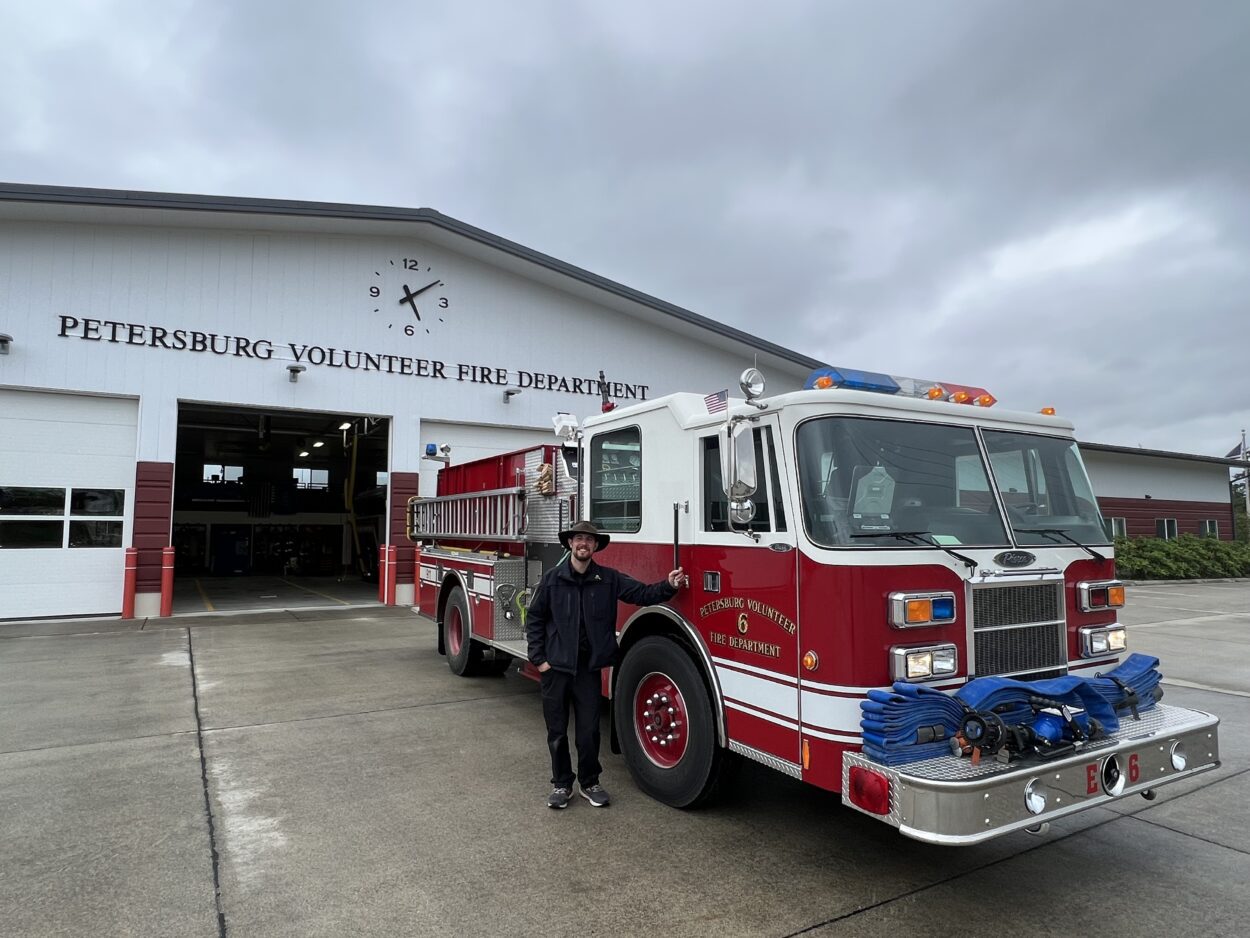
(Photo by Thomas Copeland/KFSK)
Petersburg’s Volunteer Fire Department responded to a chimney fire on South Nordic Drive on Tuesday, October 29, at about 2 p.m. When the two fire engines and team of ten firefighters arrived on the scene south of downtown, the fire had mostly gone out by itself. No residents or responders were hurt, but there was some minor property damage.
Dave Berg, assistant fire chief for the Petersburg Volunteer Fire Department, said the fire resulted from creosote buildup in the chimney stack — that’s the black, tarry gunk left over from wood fires.
“That happens when people don’t burn their their wood burning fireplace hot enough to take that creosote out on a regular basis,” said Berg. “So, we recommend heating your stove up while you’re in the house for a couple of minutes and burn it pretty heavily. We recommend that when people have a wood burning appliance, they check it every year at the Volunteer Fire Department. We have some brushes and and rods that can be used to get up on a roof and actually brush out a chimney.”
Berg said, as Petersburg heads into the colder months, it’s especially important for residents to be mindful of their chimneys and wood stoves.
“You always want to be burning dry wood,” said Berg. “Wet wood has a tendency to create more creosote in the chimney stack. When that creosote gets embedded into the walls of the stack, it can catch on fire when it gets up to temperature. So, that’s why [we recommend] heating the stove up and and burning that creosote on a regular basis — rather than having it explode on you, if you will, into a fireball inside the chimney.”
Daylight savings time is just around the corner. Berg says that when residents set their clocks back on Sunday, November 3, they should also remember to replace the batteries in their smoke and carbon monoxide detectors.










